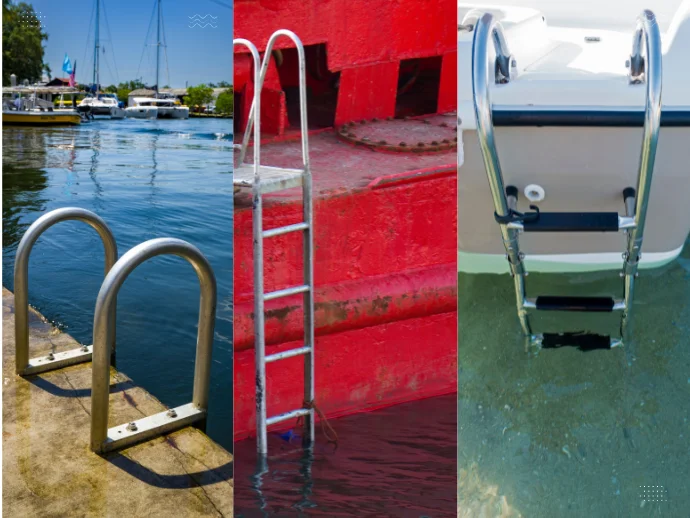
Your boat is your pride and joy. You scrub, shampoo, polish, or wax it to keep it looking beautiful. But you often ignore the boat lift, which works harder than you realize. It lifts thousands of pounds, sits in water all day, and faces the sun, salt, and storms. It’s tough, but not invincible.
Many boat owners neglect their lifts. When they notice, it’s usually too late. Cables break, motors fail, frames rust, or the boat begins to drop. That is why boat lift maintenance tips are very essential for boat owners.
Boat lift maintenance is not difficult or time-consuming. In 2025, with LMS (Lift Management Systems) and other more innovative tools, it will be easier to manage. This article will break everything down for you, providing simple, doable tips for regularly servicing your boat lift.
Why Boat Lift Maintenance Matters?
A boat lift failure is not just an inconvenience. It costs money, can be dangerous, and is time-consuming!
When the lift fails, your boat can end up:
- Waiting in the water while you fret for days, risking the potential for algae or storm damage to occur.
- Getting scratched or dented when obstacles occur from improper loading.
- Or, worst case, sinking if a cable or support breaks.
Keeping your lift properly maintained will:
- Extend the lifting life by years.
- Keep emergency repairs to a minimum, if any at all.
- Prevent accidents with your valuable boat.
- Keep your mind at ease for every boat lift, every time you dock!
With Lift Management Systems, everything is tracked for you, including tension, runtime, cable wear, and even alert history!
12 Main Boat Lift Maintenance Tips
1. Inspect Cables Thoroughly and Often
Lift cables do all the heavy lifting by supporting the boat’s weight, so they wear out faster than you think. Check for rust, corrosion, or broken strands.
While inspecting, run your hand carefully and use gloves. Feel along the cable for any rough patches or flat spots.
Listen when you lift – if you hear grinding or squealing, you have trouble. Even if the cables look good, don’t take the chance. Replace them every two to three years, sooner in salt water.
Some of the advanced models of LMS will indicate whether the tension has shifted or cables are beginning to fail. This is a real plus!
2. Keep Pulleys and Sheaves Moving Smoothly
Pulleys (sheaves) guide cables smoothly. But when they are dry and/or dirty, friction increases, wearing out your system.
How to maintain:
- Grease all sheave pins and fittings with marine-grade grease.
- Don’t over-grease, because you don’t want to collect dirt.
- Stick to at least twice a year, and more often if you use the lift frequently.
If your lift sounds louder than it has in the past, or cables skip, you may need to lube again.
3. Wash It Down; Yes, the Whole Lift
Docks and lifts can attract the following:
- Salt deposits
- Mud
- Algae
- Sand
How to clean your Dock and Lift?
- Fresh water after each use of a watercraft in saltwater conditions.
- Spray the cables, bunks, motors, frame, etc.
- Use a mild detergent every few weeks.
In saltwater regions, rinse with a corrosion inhibitor per spray. Plenty of marine-safe ones will lay a protective coating where salts or other contaminants are or may be trapped.
4. Tighten All Bolts and Hardware
Your hoist shakes and flexes while it is operating. This movement comes with looseness of bolts. Loose parts may lead to significant failure! To avoid this, every 2 months you should:
- Check cross-beams, support arms, cable clamps, and winch mounts;
- Tighten all bolts using the correct torque.
- Identify any missing washers, cracked brackets, or rust.
If you are not using stainless steel hardware, now is the time to consider upgrading. It lasts longer and provides better corrosion resistance.
5. Check the Bunks; They’re Protecting Your Hull
Your bunks provide weight and shape for your boat. If they are worn out, they can damage the hull.
Look for:
- Rotting wood
- Torn or loose carpet
- Exposed staples or fasteners
Upgrade option:
Vinyl-wrapped bunks are gaining popularity in 2025. They do not retain water, dry quicker, and last longer.
6. Inspect and Protect the Motor
The motor is the lift’s primary power source. If it fails, you are stuck.
You should check regularly for:
- Water damage
- Corrosion on terminals or wires
- Unusual sounds or overheating
Protect it:
- Cover it up adequately.
- If you are in a floodplain, mount it high.
- Clean gently with a dry cloth; do not hose it off directly.
Some new motors have LMS connections that track usage cycles from the RGA, voltage drops, and even temperature levels. You can set alerts for service or error levels.
7. Test the Limit Switches
Limit switches prevent the lift from going too high or too low. If limit switches malfunction, you may damage your boat, experience a jam, or exceed the lift’s load capacity.
Check them by running your lift up and down. Make sure it stops at the correct automatic positions. If not, adjust them or call a technician.
Many LMS units have digital limits and allow travel limits to be adjusted via an app or remote control, which is convenient when switching boats.
8. Keep the Remote in Check
Remote lifts are good, but they often get forgotten.
Look for the following:
- Low battery life
- Stuck or broken buttons
- Water damage
Always keep remotes indoors or in a waterproof box. If your lift uses a smart app, keep the firmware updated and the app synced to your lift.
9. Watch for Marine Growth and Slime
If your lift remains in the water, you are battling nature.
Algae, barnacles, and zebra mussels are happy to attach themselves to:
- Lift legs
- Cables
- Frames
- Underwater brackets
How can you mitigate this?
- Scrape off any buildup every month.
- Use anti-fouling paint or coatings.
- Power wash as little as possible! And do not power wash cables
If your lift is located in an area of heavy infestation, LMS alerts can let you know when lift movement slows down, typically a state of added drag due to growth.
10. Inspect the Electrical System
Electric lifts depend on clean, dry power.
Every few months:
- Open the junction box (make sure to turn off power first)
- Check for rust, charred wires or connections, corrosion
- Check fuses and GFCIs
Wrap connections in dielectric grease or use sealed marine connectors in humid or salt-heavy locations.
11. Cover and Store Properly Off-Season
If you leave your lift outside year-round, don’t forget to winterize your lift this season.
Winterizing tips:
- Wash and grease all moving parts
- Lower your cradle into the water to deice (or raise it fully, if you are pulling the boat out)
- If possible, remove and store the motor
- Put a waterproof lift cover or tarp on it
- If you are in a freezing climate, pull the lift completely
If you’re using an LMS, some platforms have seasonal presets that make winterizing your system a snap, just a few taps, and you’re done!
12. Schedule a Professional Inspection
A professional opinion is still reasonable even if you’re a do-it-yourselfer. Once a year, have a marine lift technician check the:
- Structural welds and alignment
- Cable tension
- Below water components
- Service or calibrate your LMS unit (if applicable)
It’s a small investment for a safer lift that will last longer.
Final Thoughts: Take Care of the Lift That Takes Care of Your Boat
A boat lift may not be flashy like your engine or electronics, but it takes on one of the most critical responsibilities. Keeping your boat safe.
It works diligently, lifting thousands of pounds. With a bit of attention, it can work hard for you for 15+ years. Three boat lift maintenance tips are to check it often, clean it well, and fix it early.
So next time you admire your boat at the dock, give a glance and a nice little nod to the lift underneath it.
It’s doing all the heavy work, literally.



